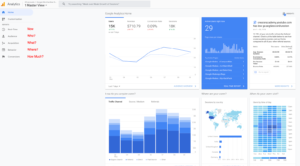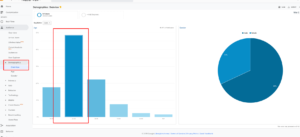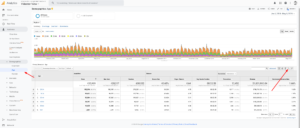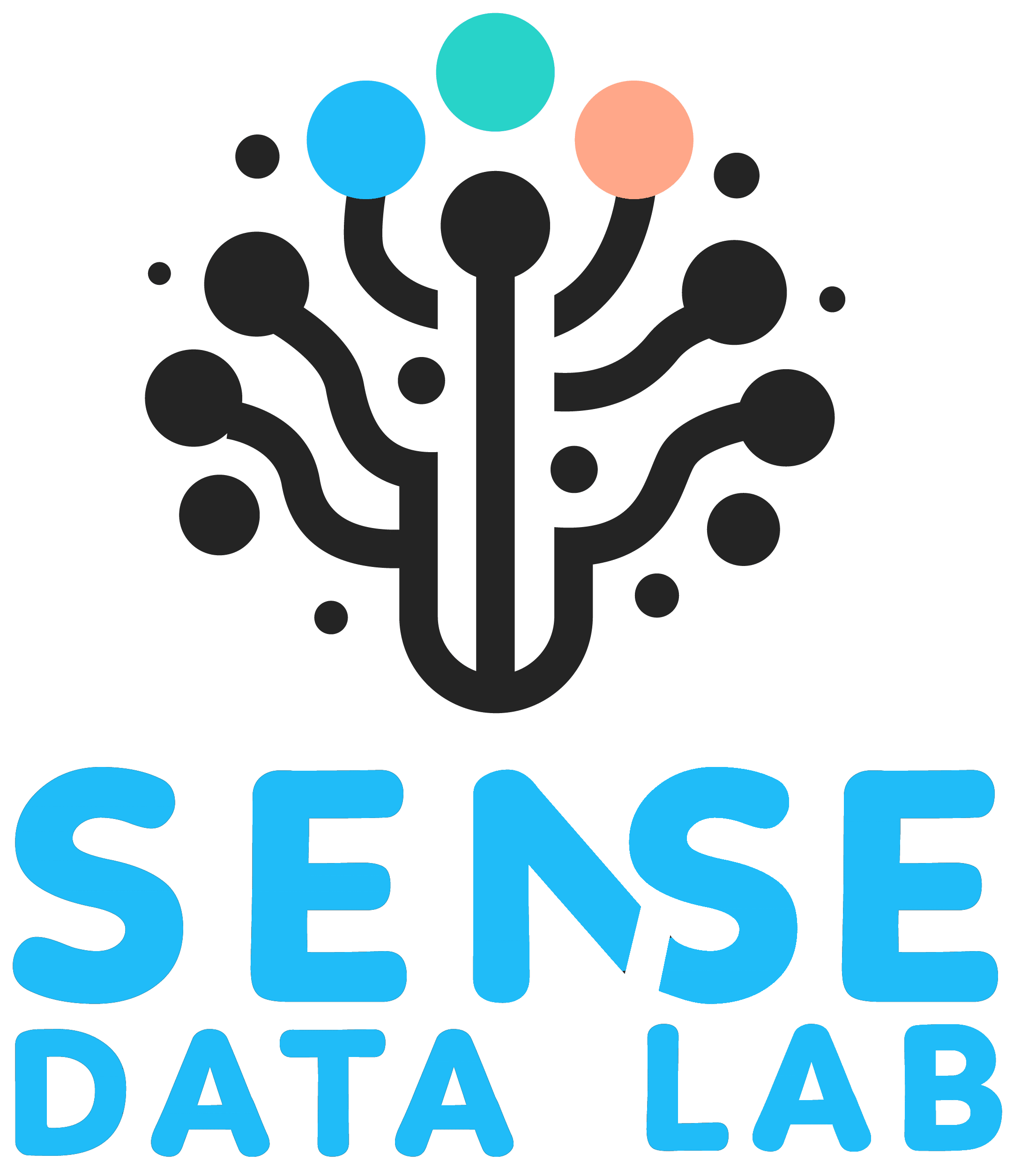Google Analytics For Beginners – Audience Basics
One of the biggest challenges I run into with clients is that often times they are unsure of how to use Google Analytics to its fullest extent to get the most value from the platform, they don’t know how to access the data they have or they are unaware of what data is available to them for decision making. This is the first article in a series which will provide you with a guide on how to navigate Google Analytics as well as develop basic questions to get a more complete picture of what is going on with your website and traffic.
Reporting Overview
In GA You will find various different reports these are logically split up into 5 different areas: real time, audience, acquisition, behaviour and conversion. But for my purposes I like to think of it as:
Real Time – Now- What is happening right now on my site?
Audience – Who? – Who are the people accessing my website?
Acquisition – Where? – Where did these people come from?
Behaviour – What ? – What did they do when they got here?
Conversion – How much? – How much did they buy/convert on my products, services, core KPI’s?

Audience
Within the audience report we are able to determine roughly what our audience profile is i.e. the who. Here we wil be able to determine things like:
What devices and browsers users are using to access the website
Age and gender
Location
How many of these users are new vs returning
Interests and affinity and much more..
So What?
Now the questions you will be looking to answer with this report depends entirely on the business you own/are working for and the nature of your website and your job. That being said some questions that could be asked could include:
- Whats the general profile of my audience? Am I marketing the right message based on age and gender? And How can I use this information in my targeting?
- What devices and browsers are my visitors using to access my website? Is my site optimised for this?
- What location are people browsing from? Are there higher visits/conversions happening in particular areas for products or pages that I need to be aware of?
- What’s the general profile of my audience? Am I marketing the right message based on age and gender? And How can I use this information in my targeting?
In order for us to view this information we go to: audience>demographic>overview
Pull back your date range to make sure you we have a bit more data in your sample, to do this go to the top right hand corner to adjust beginning and end date. Can you see anything that surprises you? Is there one gender or age group disproportionately highly represented here?
In the case below using the google demo account we can see that the age range 25-34 makes up the majority of the traffic. Here you might immediately say ok this is who we need to market to. But wait, we want to look for opportunities here, does this age range perform well for us? And are there any others which we could additionally target/test to see if they would bring us more conversions.

In the age report we can see a summary of metrics laid out in a table format with the age range broken down by various dimensions. If you are an ecommerce website we can look to see how much each age range is buying from us and what their conversion rate is, we can use this as an indicator to how engaged they are and if they are the right fit. If you aren’t selling on your website and instead have goals setup you can use the goals conversion rate instead (thats assuming you have these setup correctly). If you are unsure if your account is setup correctly read my article on small biz bonfire: 5 reasons why your google analytics setup sucks (probably)
Conversion rate: the percentage of sessions that ended up converting on either ecommerce products or goals your are tracking.
To get a clearer visual representation I like to compare metrics to the site average, to do this click on the button next to the bar chart.

What we find here is interesting, although 25-34 yo’s make up the majority of traffic 34-44 year olds have a much higher ecommerce conversion rate, on average they are 45% more likely to convert on this website with 45-54 yo’s being over 27% higher than average in their conversion rate! Could this mean that we should experiment targeting an older demographic? These are some hypothesis we can start to build and drill down on as we test.


What devices and browsers are my visitors using to access my website? Is my site optimised for this?
This question would likely land more in the UX territory, here we might look to find out if there are any browsers which have a disproportionately high bounce rate (assuming you are not just directing users to a promotional landing page).
To do this navigate to audience> technology>browsers & os. Filter the data down by bounce rate and compare to find difference.
Always keep in mind to look at the amount of users as well, the larger the sample size of users the more accurately you will be able to determine if there is an issue or not, here it is helpful to filter by bounce rate and then click on the weighted sort, this will get GA to bring in a more significantly sized sample to compare bounce rate on. If you see one popular browser with significantly higher bounce rate than the average this could indicate a compatibility issue.

Similarly if we look at the device report we can see how users across different device types are interacting with your website. A much higher than average bounce rate might be an indication that changes are required (if your goal is to get them to browse multiple pages). Also here we might want to look at conversion rate for each device type, if mobile gets the majority of either goal or ecommerce conversions then you could increase your bids in Google Ads to target mobile more than desktop for your bottom of the funnel campaigns.

What location are people browsing from? Are there higher visits/conversions happening in particular areas that I need to be aware of?
Similar to age group the location report can be a great way to identify targeting opportunities as well as identify any opportunities and spur content ideas. To access navigate to audience>geo>location
Again we want to find out how each region/city/country is converting, in our case we are only focused on the United States as this represents the largest volume of traffic and revenue for the google store.
If we look at this particular google demo account we can see although not the largest traffic share the city of Mountain View is bringing in the most revenue and has a high conversion rate, if we mix this in with the fact that Palo Alto also is nearby we can safely say that any product marketing efforts should be directed to this area as the users here are highly engaged and likely to buy (this is likely because Mountain View has the googleplex headquarters where the majority of google employees sit with propeller hats).

Similarly if you are looking to develop blog content to drive engagement you might want to look at which cities/regions/countries are engaging most with your website. Would it be beneficial to maybe write blog articles specific to that area ?


This is just a glimpse and a overview to get your thinking going around how you might browse the reports to start to develop hypothesis and tests that you can use to drive business outcomes. There is a lot more to it and plenty more information you can look at and break down and browse, particularly when we start talking about secondary dimensions and using segments. GA can be a very powerful platform when it is used correctly.

Recent Comments